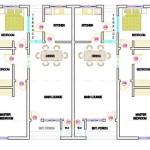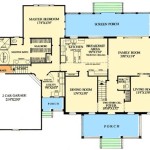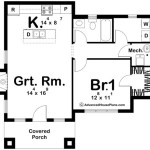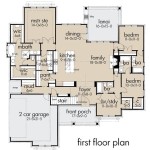How To Make Floor Plans
Floor plans are an essential part of the home design process. They provide a visual representation of how a space will be laid out, and they can be used to make important decisions about the flow of traffic, the placement of furniture, and the overall functionality of a space.
Creating a floor plan can seem like a daunting task, but it's actually quite simple with the right tools and techniques. Here's a step-by-step guide to help you get started:
Step 1: Gather your materials.
You'll need a few basic materials to create a floor plan. These include:
- Graph paper or drafting paper
- A ruler or T-square
- A pencil and eraser
- A scale
Step 2: Choose a scale.
The scale of your floor plan is the ratio of the size of the drawing to the size of the actual space. For example, a scale of 1:50 means that 1 inch on the drawing represents 50 inches in the actual space.
The scale you choose will depend on the size of the space you're planning and the level of detail you want to include in your drawing. For most home design purposes, a scale of 1:50 or 1:100 is sufficient.
Step 3: Draw the exterior walls.
Start by drawing the exterior walls of the space you're planning. Use a ruler or T-square to draw straight lines, and be sure to include all of the windows and doors.
If you're planning a multi-story home, you'll need to draw a floor plan for each level. Just be sure to use the same scale for each plan so that they can be easily combined later on.
Step 4: Add the interior walls.
Once you've drawn the exterior walls, you can start adding the interior walls. Again, use a ruler or T-square to draw straight lines, and be sure to include all of the doors and windows.
If you're planning a room with a complex shape, you can use a compass or French curve to draw the curves.
Step 5: Add the furniture.
Now it's time to start adding the furniture to your floor plan. This will help you to visualize how the space will be used and to make sure that there's enough room for everything you need.
To add furniture to your floor plan, simply draw simple shapes that represent the size and shape of the furniture you're planning to use. You don't need to draw every detail, just enough to get a general idea of how the space will be used.
Step 6: Add the finishing touches.
Once you've added the furniture, you can start adding the finishing touches to your floor plan. This includes things like appliances, lighting, and fixtures.
You can also use different colors or shading to indicate different types of materials, such as flooring, walls, and countertops.
Step 7: Review and revise your plan.
Once you're finished drawing your floor plan, take some time to review it and make any necessary revisions. Check to make sure that all of the measurements are correct and that the space is laid out in a way that makes sense.
If you're not sure about something, don't be afraid to ask for help from a professional designer or architect.
Tips for creating a floor plan:
- Use a scale to ensure that your drawing is accurate.
- Draw the exterior walls first, then add the interior walls and furniture.
- Use different colors or shading to indicate different types of materials.
- Review and revise your plan before finalizing it.
- Don't be afraid to ask for help from a professional designer or architect if you need it.
Creating a floor plan is a valuable tool for planning the layout of your home. By following these steps, you can create a floor plan that will help you to visualize how the space will be used and to make informed decisions about the design of your home.

Floor Plan Creator And Designer Free Easy App

Floor Plans Learn How To Design And Plan

How To Draw A Floor Plan The Simple 7 Step Guide For 2024

Floor Plans Learn How To Design And Plan

Floor Plan Creator And Designer Free Easy App

How To Draw A Floor Plan Dummies

How To Create A Floor Plan Before You Move

Draw Floor Plans With The Roomsketcher App

Blender For Noobs 10 How To Create A Simple Floorplan In

Make Your Own Blueprint How To Draw Floor Plans








